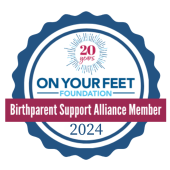Can a Single Father Adopt?

For those thinking about single-parent adoption in Illinois, understanding the steps and requirements is essential. Knowing your rights and what’s expected can make the process smoother. With the right guidance and preparation, single fathers can confidently move forward with the adoption process.
In this post, we’ll discuss the legal aspects, practical steps, and resources available to help single fathers manage the adoption process successfully.
Eligibility for Single Father Adoption
In Illinois, the law permits single individuals, including single fathers, to adopt. The Illinois Adoption Act outlines the procedures and rights of all parties involved in the adoption process. Prospective adoptive parents must be reputable adults, at least 18 years old, and residents of Illinois for at least six months. This residency requirement ensures that the adoptive parent is committed to providing a stable home within the state.
1. Home Study Requirements
A critical component of the adoption process is the home study. This assessment evaluates the prospective parent’s ability to provide a safe and nurturing environment. For single parents and couples, the home study will examine factors such as financial stability, emotional readiness, and support systems. The process includes background checks, interviews, and home visits to ensure a safe environment.
2. Financial Preparedness
In addition to the expenses that come with raising a child, adoption also involves other expenses, including legal fees, agency costs, and potential medical expenses related to the birth. Single fathers should prepare for these costs and explore financial assistance options if needed. Some employers offer adoption benefits, and tax credits may be available to offset expenses. Proper financial planning is essential to ensure a smooth adoption process.
3. Support Systems and Resources
Building a support network is vital for single fathers pursuing adoption. Engaging with local adoption agencies, support groups, and counseling services can provide guidance and emotional support. Organizations like the Adoption Center for Family Building offer resources tailored to single parents, assisting them throughout the adoption journey.
Single fathers may encounter specific challenges, such as societal biases or concerns about balancing work and parenting responsibilities. It’s important to address these challenges proactively by seeking advice from professionals and other single adoptive parents who can share their experiences.
Steps and Requirements for Single-Father Adoption
Single-father adoption involves key steps and requirements. Knowing these can help you prepare and make the process smoother and more successful.
1. Self-Assessment and Preparation
Before initiating the adoption process, it’s essential to evaluate your readiness. Consider the following:
- Emotional Readiness: Reflect on your motivations for adopting and ensure you’re prepared for the responsibilities of single parenthood.
- Financial Stability: Assess your financial situation to confirm you can provide for a child’s needs.
- Support Network: Identify friends, family, or community resources that can offer support. A strong network is invaluable for single parents and anyone pursuing adoption.
2. Research Adoption Options
Explore the different types of adoption to determine which aligns with your circumstances:
- Domestic Adoption: Adopting a child within the United States, either through an agency or private arrangement.
- International Adoption: Adopting a child from another country, which may involve legal or immigration hurdles and additional country-specific requirements for adoptive families.
- Foster Care Adoption: Adopting a child from the foster care system, often with fewer costs but potentially more complex emotional dynamics.
3. Choose an Adoption Professional
Selecting the right agency or attorney is crucial. Look for professionals experienced in single-parent adoptions and who can guide you through the process. Ensure they are licensed and committed to ethical adoption practices.
4. Complete a Home Study
A home study is a comprehensive assessment of your ability to provide a safe and loving environment. It typically includes:
- Background Checks: Criminal and child abuse clearances.
- Health Evaluations: Medical examinations to ensure you can meet the physical demands of parenting.
- Financial Assessments: Documentation of income, assets, and debts.
- Home Visits: Inspections to verify a safe living environment.
- Interviews: Discussions about your background, lifestyle, support system, and parenting philosophy.
5. Complete Training and Education
Agencies require prospective adoptive parents to complete a training curriculum. These trainings cover a variety of adoption topics such as:
- Open Adoption: Benefits, challenges, and how to navigate ongoing relationships with your child’s birth family.
- Birth Parent Experience: Understanding the adoption journey from the birth parent perspective, in order to learn how to be a better advocate for all those involved in the adoption process.
- Preparing to Parent: How you as an adoptive parent can best support your child’s attachment, identity, and wellbeing
- Cultural Competency: If adopting transracially or internationally, how to support your child’s unique needs and encourage their connection to their cultural background.
6. Create an Adoption Profile
Your adoption profile introduces you to birth parents. It should be honest and reflective of your personality, lifestyle, and the type of parent you aspire to be. Including photos and personal stories can make your profile more engaging.
7. Wait for a Match
The waiting period can be challenging. During this time:
- Stay Engaged: Continue learning about parenting and adoption.
- Maintain Communication: Keep in touch with your agency for updates.
- Prepare Your Home: Ensure your living space is ready for a child.
8. Placement and Post-Placement Visits
Once you have matched and the birth parent has completed their consent to the adoption, the child will be placed in your home. Post-placement visits by a social worker will assess the adjustment and provide support. These visits are crucial for finalizing the adoption.
9. Finalize the Adoption
The final step involves a court hearing where a judge legally recognizes the adoption. After this, you will receive an amended birth certificate listing you as the child’s parent.
10. Ongoing Support and Resources
Adoption is a lifelong commitment. Seek out support groups, counseling, and educational resources to assist you and your child as you grow together.
Can a Single Father Adopt? Key Takeaways and Next Steps
Yes, a single father can adopt! By understanding the requirements, preparing for the home study, managing financial considerations, and building a robust support system, single fathers can successfully navigate the adoption process and provide a loving home for a child.
If you’re a single father interested in adoption, the Adoption Center for Family Building is here to support you. Visit our website at Adoption Center for Family Building or Contact Us to learn more about how we can assist you in this rewarding process.





